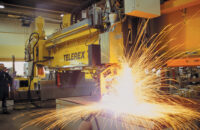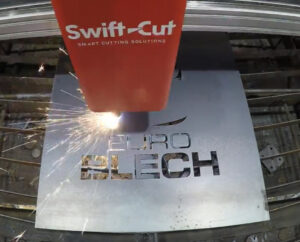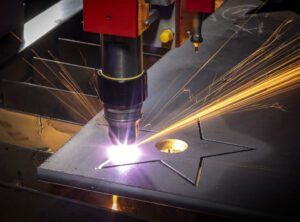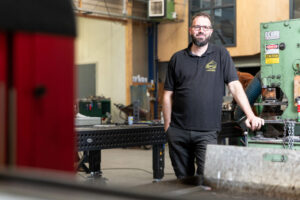Plasma Cutters
How does a plasma cutter work?
Coming after solid, liquid and gas, plasma is the fourth state of matter. When gas is heated enough, the atoms split, separating the electrons from the nucleus. Once the heat releases the electrons, the move quickly. These electrons are negatively charged. As they move, they leave behind a positively charged nuclei, known as an ion. When the ions and electrons collide, they release a whole load of energy and it is this energy that gives plasma its great cutting power.
So how does a plasma cutter work? Well, plasma cutters operate by sending pressurised gas (like nitrogen, argon or oxygen) through a tiny channel with a negatively charged electrode in the centre of it. When power is applied to this negative electrode and the nozzle touches the metal, a circuit is created and a spark is generated between the electrode and the metal. This very spark heats the inert gas to the point where it turns into plasma and it releases a direct stream. This plasma stream is approximately 16649 degrees Celsius, and moves at a speed of 20,000 feet per second. When it comes into contact with metal, the plasma reduces it to molten slag.
For as long as the power is supplied to the electrode and the plasma stays in contact with the metal, this plasma arc will be continuous. To maintain this connection, the nozzle releases a constant flow of shielding gas around the cutting area and the radius of the plasma beam will be dependent on the pressure of this gas shield.
Our Swift-Cut CNC plasma cutting tables cut a range of metals, including steel, to any shape with a very high degree of accuracy and with a smooth edge.









